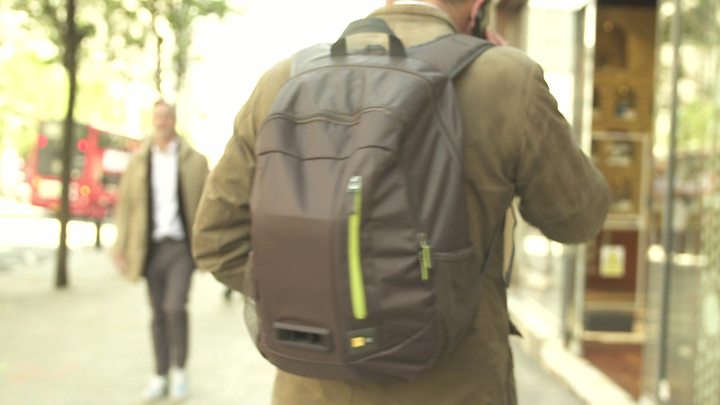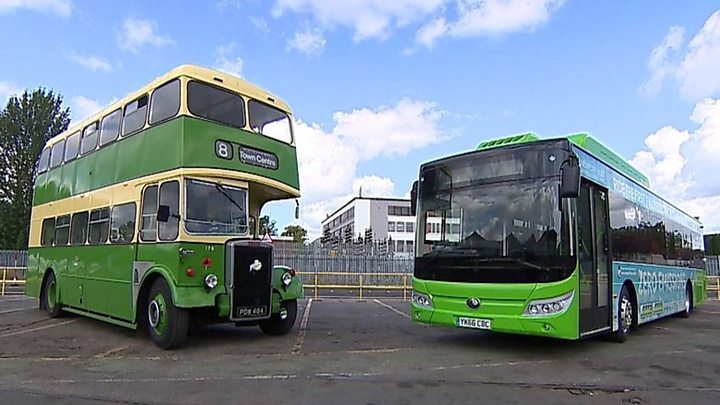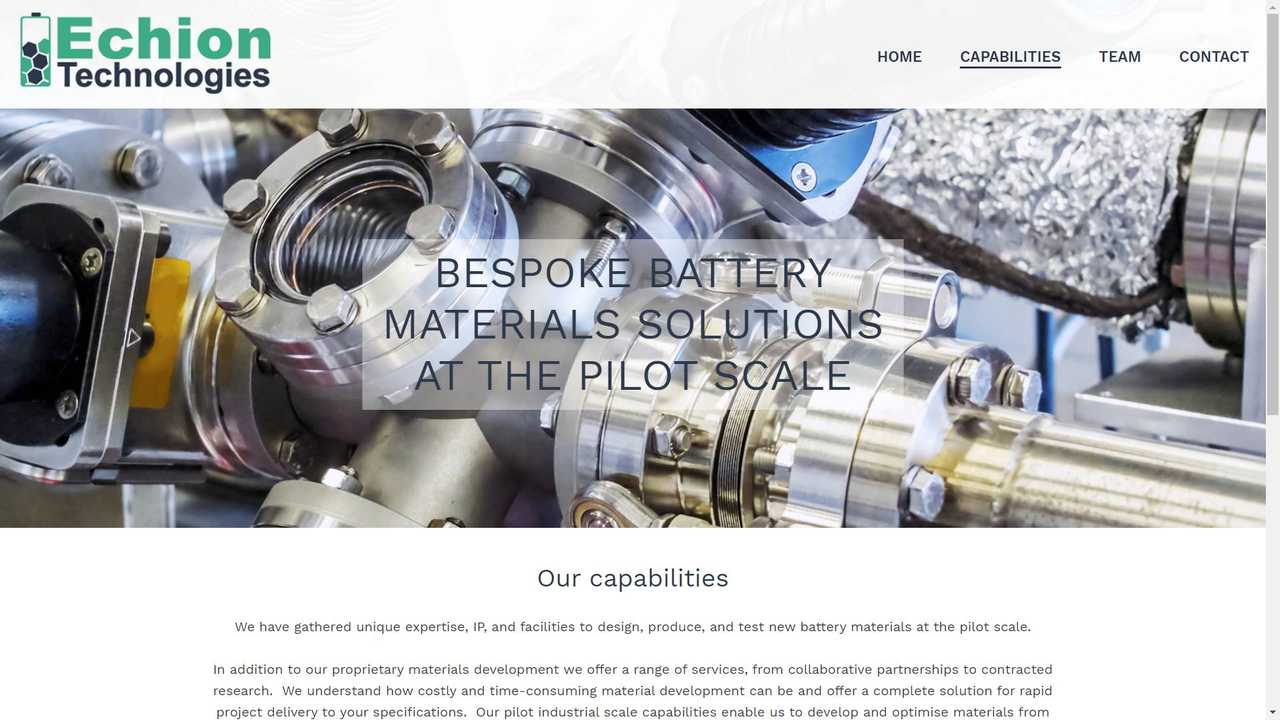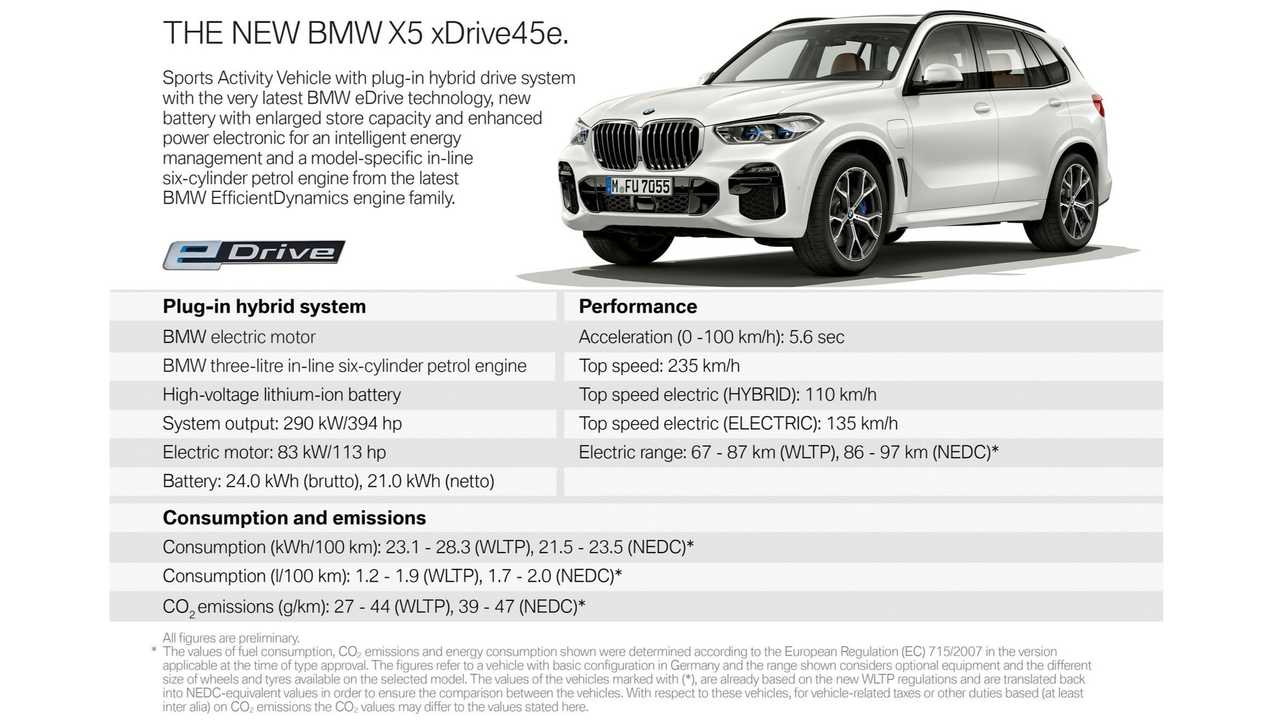Charging at home: from household socket to wallbox Charging on journeys: high-speed charging is standard Charging everywhere: with the “universal charging cable” at every charging station Via remote control: efficient travel with e-Services and the myOpel app Rüsselsheim. Europe’s energy infrastructure is extremely diverse, with a wide variety of power supply grids offering different charging… Continue reading Opel Corsa-e Electric Car: Fast and Easy Charging
Tag: Electric vehicles
Ditch cars to meet climate targets, say MPs
People will have to get out of their cars if the UK is to meet its climate change targets, MPs say. The Science and Technology Select Committee says technology alone cannot solve the problem of greenhouse gas emissions from transport. It says the government cannot achieve sufficient emissions cuts by swapping existing vehicles for cleaner… Continue reading Ditch cars to meet climate targets, say MPs
Wales’ first electric bus to hit the road
Media playback is unsupported on your device Wales’ first electric bus will start work on the roads of Newport this week. Newport Transport has bought a former demonstration bus which will be the first in Wales to be used on a permanent basis. The city, along with Cardiff and Caerphilly, has won grant funding from… Continue reading Wales’ first electric bus to hit the road
One small step for a woman, one giant leap for an electric car
1. All information offered on Porsche Newsroom, including but not limited to, texts, images, audio and video documents, are subject to copyright or other legislation for the protection of intellectual property. They are intended exclusively for use by journalists as a source for their own media reporting and are not intended for commercial use, in… Continue reading One small step for a woman, one giant leap for an electric car
Echion’s “Magic” Powder Allows Full Battery Charge In 6 Minutes
It replaces graphite in lithium-ion batteries and prevents them from exploding. Tinker Bell had a magic powder that helped children fly to Neverland with Peter Pan. What if we told you there is another magic powder that promises to make lithium-ion batteries fully charge in six minutes? Fairy tale? That’s precisely what Echion Technologies claims… Continue reading Echion’s “Magic” Powder Allows Full Battery Charge In 6 Minutes
VW To Invest €1 Billion In Emden Site To Produce MEB-Based BEVs
Volkswagen decided to transform its Emden site into an EV plant. First BEV model expected in 2021/2022 Volkswagen has confirmed a €1 billion investment in the Emden location, which will be heavily modernized and get new halls to produce all-electric cars based on MEB-platform. The site is expected to start BEV production in late 2021,… Continue reading VW To Invest €1 Billion In Emden Site To Produce MEB-Based BEVs
BMW Triples All-Electric Range Of X5 PHEV With 24 kWh (Specs)
Up to 67-87 km (41.6-54 miles) of all-electric range under WLTP test cycle strongly hints at over 30 miles (48 km) EPA. BMW, and many other especially European manufacturers, attracted a lot of criticism across the years for offering compliance plug-in hybrids with small battery capacity and tiny all-electric range. It seems that most recently… Continue reading BMW Triples All-Electric Range Of X5 PHEV With 24 kWh (Specs)
Suzuki chairman pins hope on closer ties with Toyota
TOKYO — For the past 20 years or so, Suzuki Motor Chairman Osamu Suzuki has been pondering the future of the carmaker he has led for four decades, striving for a vision of the company’s next 100 years. With technological shifts such as electric cars and autonomous driving clouding Suzuki Motor’s outlook, and that of the industry as a… Continue reading Suzuki chairman pins hope on closer ties with Toyota
World’s largest electric ferry completes maiden voyage
Electric transportation technology is spreading beyond cars to heavy equipment, airplanes, helicopters, and now, boats.
The Danish ferry boat Ellen, which made its maiden voyage earlier this month between the Danish islands of Aero and Als, claims to be the world’s largest all-electric ferry.
While electric technology is still a challenge for long-haul shipping, and cruise companies are just branching out in to hybrids, short-haul, point-to-point ferry runs seem tailor-made for electric power.
Electric ferries have been running in Norway since 2015, but none nearly as large as the 195-foot long Ellen. This ferry can carry up to 30 cars (electric cars, we'd hope) and 200 passengers, and is powered by a 4.3 megawatt-hour lithium-ion battery pack made by conversion company Leclanche.
The company designs specialized marine battery rack systems with specialized fire prevention and extinguishing systems, and uses its own specialty battery-cell design.
All-electric passenger and car ferry, in Denmark
Leclanche CEO Anil Srivastava says that the new ferry will displace emissions of 2,000 tons of carbon-dioxide a year, plus 42 tons of nitrogen oxides, 2.5 tons of particulates, and 1.4 tons of sulfur-dioxide.
It’s among many new ships using hybrid and electric power and designed to meet new pollution standards for approaching and anchoring in European ports.
Ellen is “the precursor to a new era in the commercial marine sector,” Srivastava said. “This project demonstrates that today we can replace fossil fuel thermal drives with clean energy, and thus contribute to the fight against global warming and pollution for the well-being of our communities.”
Tesla Model 3 Buyers In China Can Rejoice Thanks To Sales Tax Exemption
Invest
Electric Cars
Electric Car Benefits
Electric Car Sales
Solar Energy Rocks
RSS
Advertise
Privacy Policy
Cars
Published on August 31st, 2019 |
by Steve Hanley
Tesla Model 3 Buyers In China Can Rejoice Thanks To Sales Tax Exemption
Twitter
LinkedIn
Facebook
August 31st, 2019 by Steve Hanley
No one knows what is going to happen with the “easy to win” tariff war initiated by America’s putative president over a year ago, least of all him. What we do know, however, is that China has agreed to grant all Tesla vehicles an exemption from the 10% purchase tax that all new car buyers normally pay.
According to Reuters, the Ministry of Industry and Information Technology announced the exemption on August 30. The change marks an important concession amidst trade tensions with the United States. On average, the exemption will lower the cost of buying a new Tesla by 99,000 yuan, or about $13,957, according to a post on Tesla’s social media WeChat account.
All 16 variants of the Tesla Model S, Model X, and Model 3 offered for sale to Chinese customers are listed in a document detailing the exemption on the MIIT website. No reason was given for the decision to exclude the cars from the tax, but it does come at a time when Tesla is expanding in China by building a new factory in the Free Trade Zone outside Shanghai.
Leading up to the start of production at that factory, Elon Musk has visited China several times. He has publicly praised China in the midst of tensions with the United States and thanked the Shanghai and national governments for their support.
Musk has met with senior leaders, including China’s Vice President Wang Qishan and the transportation minister. He has called national leaders “very thoughtful” and alluded to China’s “amazing” progress in sustainable energy, transport, and space exploration. “This year they did more orbital launches than the USA for the first time,” Musk tweeted last December.
Craig Irwin, an analyst for Roth Capital, tells Reuters, “It is pretty clear Tesla is committed to China, with the investment in the Shanghai Gigafactory. Those relationships probably helped Tesla lobby for a successful exemption from the tax. Now we need to closely watch the build out of the Shanghai Gigafactory and Model 3 volume ramp in China.”
While Tesla does not disclose sales by country, consulting firm LMC Automotive estimates the company sold 23,678 cars in China in the first seven months of this year, which is nearly double the number it sold in 2018.
Also on Friday, Tesla announced it is raising the price of the cars it sells in China by 2% to offset the weakening of the yuan in recent weeks. The long range dual motor Model 3 is now 439,900 yuan ($61,467), up from 429,900 yuan ($60,070) previously. But the net effect is that, after the purchase tax exemption, Tesla will cost a Chinese customer considerably less to buy this week than it did last week. Tesla stock was up 4% following the exemption announcement.
Tesla is clearly betting heavily on China, which only makes sense since its new car market is the largest in the world and its electric car market accounts for approximately half of global electric car sales. It’s true that sales are not quite as robust this year as they have been in previous years, but there will still be more than 22 million new cars sold in China this year, even in a down market, with perhaps 8% of those being plug-in car sales.
With its close ties to the national and local governments, Tesla should be well positioned to sell as many cars in China as it can manufacture. We’ll keep you informed via our regular China EV sales reports.
About the Author
Steve Hanley Steve writes about the interface between technology and sustainability from his home in Rhode Island and anywhere else the Singularity may lead him. His motto is, “Life is not measured by how many breaths we take but by the number of moments that take our breath away!” You can follow him on Google + and on Twitter.
Back to Top ↑
Advertisement
Advertise with CleanTechnica to get your company in front of millions of monthly readers.
CleanTechnica Clothing & Cups
Top News On CleanTechnica
Join CleanTechnica Today!
Advertisement
Advertisement
Follow CleanTechnica Follow @cleantechnica
Our Electric Car Driver Report
Read & share our new report on “electric car drivers, what they desire, and what they demand.”
The EV Safety Advantage
Read & share our free report on EV safety, “The EV Safety Advantage.”
EV Charging Guidelines for Cities
Share our free report on EV charging guidelines for cities, “Electric Vehicle Charging Infrastructure: Guidelines For Cities.”
30 Electric Car Benefits
Our Electric Vehicle Reviews
Tesla News
Wind & Solar Prices Beat Fossils
Cost of Solar Panels Collapses
© 2018 Sustainable Enterprises Media, Inc.
Invest
Electric Cars
Electric Car Benefits
Electric Car Sales
Solar Energy Rocks
RSS
Advertise
Privacy Policy
This site uses cookies: Find out more.Okay, thanks



